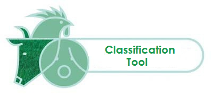Fefana tool helps defining feed ingredients

Europe’s organisation for specialty feed ingredients Fefana launches its electronic Classification Tool aiming at differentiating feed additives from feed materials.
The distinction between feed additives and feed materials has critical implications for the placing of these products in the European market.
Making the wrong choice can have severe legal and practical consequences both for the company placing a product on the market or for those using it.
The legal status of any type of feed in the EU is mainly determined by the definitions contained in Regulations (EC) No. 1831/2003 on feed additives and (EC) No. 767/2009 on the marketing of feed.
However operators and control authorities have faced difficulties to apply a consistent interpretation of these definitions in a somehow complex legal environment.
The EC Recommendation 2011/25 “Guidelines for the distinction between feed materials, feed additives, biocidal products and veterinary medicinal products”, released earlier this year were very positively perceived by the sector as a step towards more transparency and legal certainty.
Nevertheless they were, according the opinion of a number of users, still seen to be somewhat theoretical.
One of the difficulties is that the legal status of a product has to be inferred from a combination of several criteria considered simultaneously.
Classification tool
The Fefana classification tool has made the next step bringing the guidelines at a more practical and
operational level, while strictly implementing its definitions and criteria.
The classification tool aspires to support the feed business operators and the competent authorities to have a common understanding of a given substance and to document their assessment.
However it does not aim at substituting the judgement of the person using it, but rather at being a reference around which building his/her final decision.
The placing of a product on the market remains under the sole responsibility of the operator.
The tool has been organised and based on a limited number of straight and precise questions. It calculates a score based on the given answers, which categorizes the product as a feed additive, or a feed material, or a feed material (functional feed ingredient).
Feed materials, but…
In fact in addition to its use as a macronutrient or as a carrier, a feed material may also be used in order to perform one of the additive functions as defined in Article 5 of the Regulation No. 1831/200.
While this distinction does not exist in the EU feed legislative framework, it corresponds to a practical reality: these products are close to the additive concept, while being legally defined as feed materials.
During its development phase, the tool has been extensively tested on numerous products by FEFANA members and external partners and it was recognised to bring consistency and logic in the assessment.











